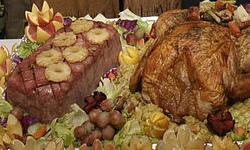Identifying Bulimia
 Bulimia nervosa is a medical condition that is marked by unusual eating behaviors. These behaviors can be spotted if you know what to look for, but be aware: none of these constitutes a diagnosis. These are warning signs that can and should generate concern, but only a psychiatrist or physician can diagnose bulimia.
Bulimia nervosa is a medical condition that is marked by unusual eating behaviors. These behaviors can be spotted if you know what to look for, but be aware: none of these constitutes a diagnosis. These are warning signs that can and should generate concern, but only a psychiatrist or physician can diagnose bulimia.
Because bulimia is characterized by abnormal eating, the identifying the disorder means spotting either a pattern of inappropriate eating behaviors or the consequences. Many bulimics will also have symptoms of anorexia nervosa, but this isn’t universally so.
The classic pattern is one of binging and purging. Binging is eating an excessive amount of food in a short time. This is usually high calorie food and it can give a person a kind of “high.” The purging that follows the binge eating gives a sense of control over the situation.
The primary indication is then spotting this pattern. Realize that purging may not be just vomiting, although that is common. Other ways to purge are excessive or compulsive exercise to burn off calories and the use of laxatives to speed food through the digestive tract.
Things to look for:
- Large food purchases that are quickly consumed. Receipts or discarded food wrappers/containers can indicate binging, especially when repeated regularly.
- Secret eating. This is eating that is concealed or hidden, sometimes by binging at odd hours of the night or in private.
- Disappearing after a meal. Someone who purges by vomiting will often excuse themselves to use the bathroom right after eating. The smells and noise are hard to conceal, so bulimics using this method will use mouthwash and seek privacy.
- Exercising to excess and placing this ahead of other activities.
- An obsession with calorie count, both positive from eating and negative through exercise.
- Purchase and use of laxatives. Laxitives are not meant for regular use unless prescribed by a doctor.
- Purchase of emetics. Syrup of ipecac is the most common. These are products meant to induce vomiting after poisoning. There is no other valid medical reason to use them.
- Some bulimics may manufacture their own laxitives or emetics based on information they get from peers. Question any strange mixture or ingredients.
Other Signals
If you are close to the person, there are other things you may spot. Typically, these are picked up by a parent of a teenager who is bulimic, with the most common situation being a mother and daughter.
- Menstruation stops or amenorrhea develops. While more common in anorexia, nutritional deficiencies in bulimia can cause this as well.
- Anxiety after a meal when purging activity is prevented by circumstances.
- Compulsive eating in response to stress (sometimes referred to as emotional eating).
- Talk about weight loss and an “expertise” that seems misplaced.
- Preoccupation with body shape and a strong desire to modify it. This is often reflected in “concealing” type clothing.
There may also be associated and underlying mental conditions that lead to bulimic behavior. With treatment, this condition can be helped tremendously.
 Eating Disorder Self Test. Take the EAT-26 self test to see if you might have eating disorder symptoms that might require professional evaluation. All answers are confidential.
Eating Disorder Self Test. Take the EAT-26 self test to see if you might have eating disorder symptoms that might require professional evaluation. All answers are confidential.